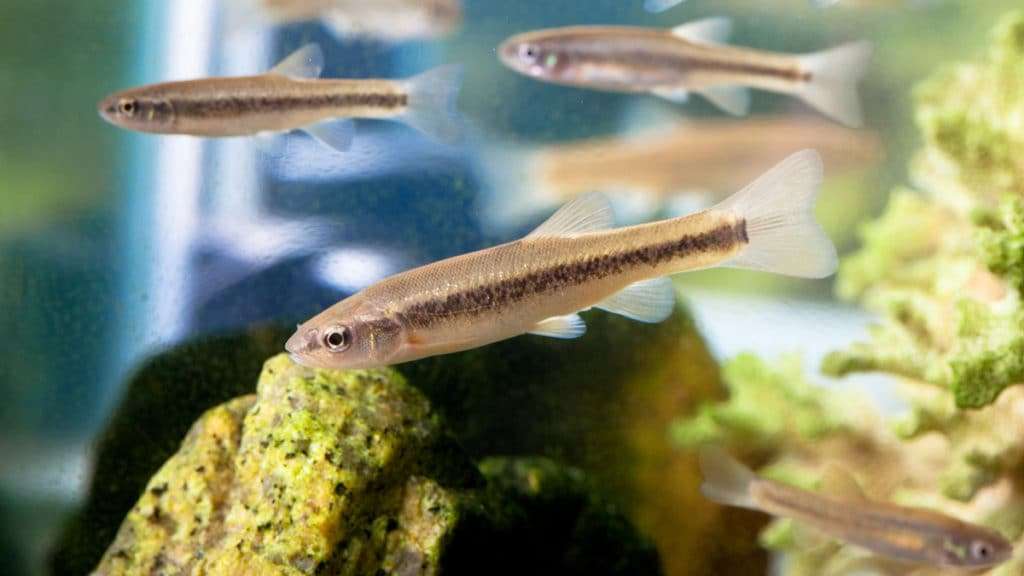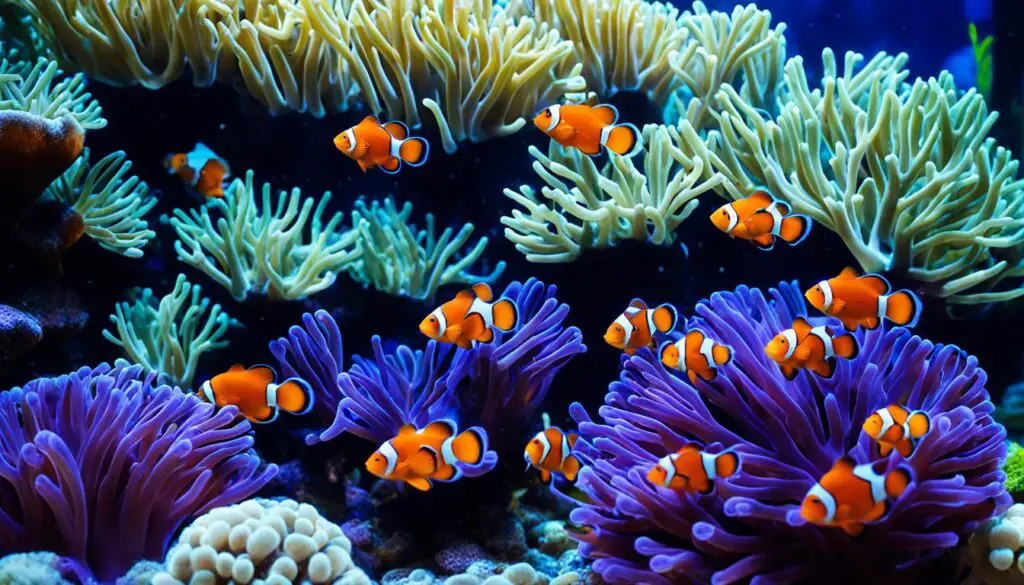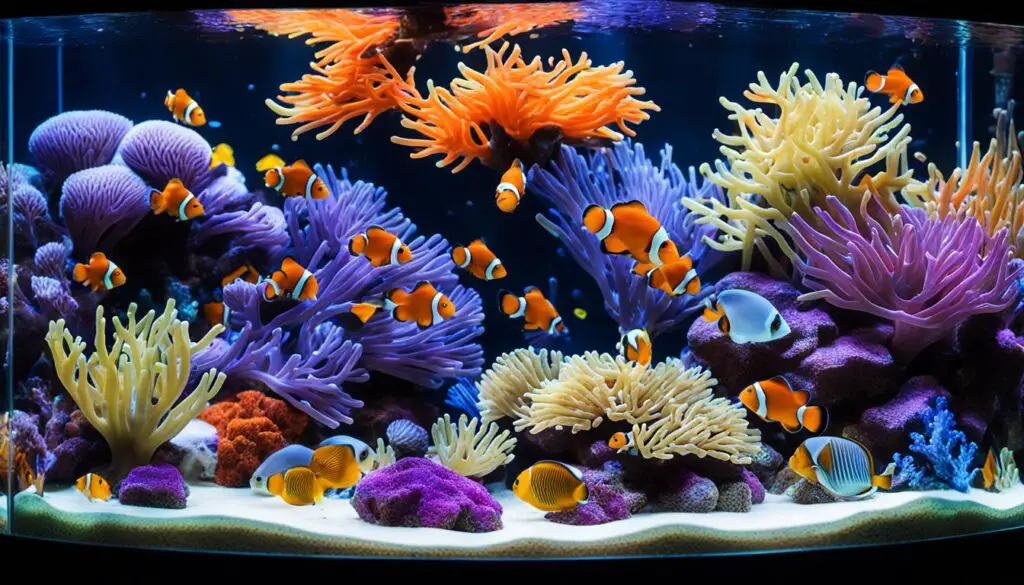What To Feed Minnows

Introduction
What To Feed Minnows: Minnows are fascinating little fish that have captured the hearts of aquarium enthusiasts and anglers alike. These tiny, silvery creatures are not only visually appealing but also serve as valuable bait for fishing and play a vital role in the aquatic ecosystem. Whether you keep them as pets or use them for bait, understanding what to feed minnows is essential for their well-being and for your success as an aquarium keeper or angler.
Feeding minnows involves more than just tossing some crumbs into the water. Minnows have specific dietary requirements that need to be met to ensure their health and longevity. This comprehensive guide will take you on a journey into the world of minnow nutrition, covering the types of food they need, the frequency of feeding, and the significance of maintaining a balanced diet. We’ll explore their natural diet in the wild and discuss how to replicate these conditions in a captive environment, whether it’s a home aquarium or a bait tank.
Minnows come from various species, each with unique dietary preferences, so understanding what to feed them is essential for minnows’ growth and overall well-being. From live and frozen foods to specially formulated pellets and flakes, we’ll delve into the array of feeding options and their suitability for different minnow species.
In this guide, you’ll also discover tips and tricks for feeding minnows and learn how to create the perfect feeding regimen to keep them thriving. Whether you’re a beginner or an experienced hobbyist, this resource will equip you with the knowledge to nurture and maintain healthy and vibrant minnows, enhancing your appreciation of these remarkable aquatic creatures.

What foods do minnows eat?
Because the Cyprinidae family is so large, the natural feeding habits of minnows vary widely. In the wild, minnows eat insects, insect larvae, even smaller fish, crawfish, brine shrimp, algae, phytoplankton, zooplankton, fish eggs – their own and those belonging to other fish – and even tiny bits of dead animal matter.
Minnows are opportunistic feeders with a varied diet, primarily consisting of small aquatic organisms found in their natural habitats. In the wild, their diet typically includes plankton, algae, insect larvae, small invertebrates, and zooplankton. They are known to feed on tiny aquatic insects, such as mosquito larvae and daphnia, as well as small crustaceans like copepods and amphipods. Additionally, minnows may consume detritus and organic matter present in the water.
In captivity, providing a diet that replicates their natural preferences is essential for their well-being. Live or frozen foods like brine shrimp, daphnia, bloodworms, and tubifex worms are excellent choices to offer as they closely mimic the small aquatic organisms found in their natural environment. Additionally, high-quality commercial fish foods, such as pellets and flakes, specially formulated for minnows, can provide essential nutrients and vitamins to support their health.
The specific diet of minnows may vary depending on their species and size, so it’s crucial to research and understand the requirements of the minnow species you are keeping. Offering a balanced diet that meets their nutritional needs is key to ensuring that these small, captivating fish thrive in your care, whether in an aquarium or a bait tank.
How do you keep minnows alive all day?
Fill a cooler approximately two-thirds of the way full with spring water or water from a local stream. Start up your battery powered bait aerator to oxygenate the water before putting in the minnows. Add your baitfish and change about two-thirds of the water each day to keep them alive.
Keeping minnows alive throughout the day, especially when used as bait for fishing, requires careful attention to their environmental conditions and feeding. Here are some key tips to ensure their vitality:
Oxygenation: Minnows, like all fish, require oxygen to survive. Ensure that the container or bait tank they are in has proper aeration or a bubbler to maintain oxygen levels in the water. Adequate oxygenation is essential to prevent suffocation and keep the minnows lively.
Water Quality: Regularly monitor and maintain good water quality. Minnows are sensitive to changes in water temperature and pH. Keep the water clean, free from pollutants, and at an appropriate temperature for the species you’re keeping. A water conditioner or dechlorinator can be used if necessary.
Shade: Provide some form of shading or cover in the tank to give minnows a place to hide from direct sunlight. This helps prevent overheating and minimizes stress on the minnows.
Proper Handling: Be gentle when handling minnows to avoid injuring or stressing them. Use a soft mesh net or wet hands to transfer them.
Feeding: Offer minnows appropriate food. While they can survive for some time without food, feeding them periodically with small amounts of suitable live or frozen prey can help maintain their energy levels.
Size and Density: Do not overcrowd the container, as this can lead to oxygen depletion and stress. Use a suitable-sized container that allows minnows to swim freely.
Can you feed minnows oatmeal?
Some things to feed your pond fish are oatmeal or oat-based cereal or share some veggies, such as carrots, pumpkin, or frozen peas. These snacks will be gentle on their system and give them some extra nutrients.
Minnows, both in the wild and in captivity, have specific dietary requirements that are typically centered around protein-rich foods and small aquatic organisms. These fish are primarily carnivorous, and their diet consists of tiny insects, crustaceans, zooplankton, and other aquatic invertebrates.
Feeding minnows a diet primarily based on oatmeal might lack the necessary proteins and other nutrients required for their well-being. Oatmeal is primarily a carbohydrate source and lacks the protein and fats essential for these fish. While minnows may nibble at oatmeal, it is not a suitable long-term or balanced food choice for them.
Live or frozen foods like brine shrimp, daphnia, bloodworms, and small aquatic invertebrates are preferable. High-quality commercial fish foods formulated for minnows, such as pellets and flakes, can also be used as part of their diet.
While oatmeal is not toxic to minnows and they may nibble at it, it should not be a significant part of their diet. Providing a well-balanced and species-appropriate diet is crucial for the health and vitality of minnows kept in captivity.
Can minnows live with goldfish?
If you only own fancy goldfish, cold water minnows may be a good option. They’re very inexpensive, tend to school together, and only grow to 1.5 to 2 inches long. When you first buy them, they’ll be much smaller, so consider growing them out (and even breeding them) before adding them to the goldfish tank.
Minnows and goldfish can coexist in the same aquarium or pond, but there are some important considerations to keep in mind. Goldfish are larger and can be more aggressive than minnows, so it’s crucial to ensure that the minnows have enough space to escape and hide if necessary. Providing ample hiding spots in the form of plants, rocks, or structures can help create a more harmonious environment.
Additionally, it’s essential to maintain good water quality, as both goldfish and minnows are sensitive to water conditions. Regular water changes and filtration are key to keeping them healthy.
While goldfish and minnows can cohabitate, it’s vital to be mindful of potential size differences, as goldfish can grow significantly larger than minnows and may inadvertently consume them. Therefore, it’s best to choose minnow species that are similar in size to your goldfish to minimize this risk.
With proper planning, ample space, and attention to water quality, goldfish and minnows can live together peacefully in the same aquatic environment, creating a visually appealing and diverse aquatic community.
How often do minnows need to be fed?
You should feed your minnows this small amount twice a day, every day. You may find that some minnows only choose to eat every 2 to 3 days, but you should attempt to feed small amounts twice daily for longevity.
The frequency of feeding minnows can vary depending on several factors, including their age, size, and the specific conditions of their environment. Generally, minnows are hardy and adaptable fish that can go for extended periods without food, especially if they have access to natural food sources in their habitat.
For adult minnows kept in an aquarium or pond, feeding them once a day or every other day is usually sufficient. You can provide them with a small amount of high-quality fish flakes, pellets, or live foods like daphnia, brine shrimp, or small worms.
In contrast, juvenile minnows may need to be fed more frequently, typically two to three times a day, to support their growth and development. These smaller minnows have higher metabolisms and require more frequent meals.
It’s crucial to monitor your minnows’ feeding habits and adjust the frequency and quantity of food based on their behavior and the condition of the water. Regular water changes and proper filtration are also essential to maintain a healthy environment for your minnows. Always strive for a balance between providing adequate nutrition and preventing overfeeding to ensure the well-being of your minnows.
How do you maintain minnows?
Warm water loses oxygen much faster than cold water so you should maintain cooler water for your minnows. Keeping ice cubes in a zip-lock baggie helps prevent cold spots while also reducing the chance the ice has been made with water containing chlorine which will contaminate bait water.
Maintaining minnows, a common and versatile baitfish, is essential for anglers and aquarium enthusiasts alike. These small fish play a crucial role in the ecosystem and are relatively easy to care for. To ensure the well-being of your minnows, you need to provide them with a suitable environment and proper nutrition.
First and foremost, you’ll need an aquarium or tank with ample space and good water quality. Minnows are social creatures, so it’s advisable to keep them in a group. Ensure the water temperature and pH levels are within the appropriate range for the specific species of minnows you’re keeping.
Feeding minnows is relatively straightforward. They are omnivorous and can be fed a diet of both live and prepared foods. Common options include small insects, brine shrimp, and high-quality flake or pellet food. It’s essential to maintain a regular feeding schedule to meet their dietary needs.
Regular water changes and filtration are also crucial for maintaining a clean and healthy environment for minnows. Keep an eye on water parameters, and perform routine maintenance to prevent ammonia and nitrite buildup, which can be harmful to your fish.
Maintaining minnows requires attention to water quality, appropriate nutrition, and suitable living conditions. With proper care, minnows can thrive and make a valuable addition to both recreational and educational settings.
How can I tell if my minnows are getting enough food?
To determine if your minnows are receiving an adequate amount of food, there are several key observations and practices you can employ. Minnows are generally small, delicate fish, and monitoring their dietary needs is essential for their health and well-being.
First and foremost, assess their behavior. If your minnows are actively foraging at the water’s surface or in the middle of the tank, it’s a good sign that they are seeking food. Keep an eye out for any signs of lethargy, as this may indicate insufficient nutrition.
Also, monitor their body condition. Healthy minnows should have plump, well-defined bodies. If they appear emaciated or their bodies start to look sunken, it could be an indicator of underfeeding.
Ensure that you are offering a balanced diet suitable for minnows. These fish typically feed on a variety of small aquatic organisms, including insects, algae, and small invertebrates. High-quality fish flakes, freeze-dried or frozen foods like brine shrimp and daphnia, and live foods can be appropriate options.
Remember that overfeeding can be as harmful as underfeeding, leading to water quality issues. So, observe your minnows closely, adjust their feeding regimen accordingly, and maintain proper water conditions to ensure their optimal health.
Can minnows eat vegetables or fruits?
Minnows are primarily omnivorous fish, meaning they have a flexible diet that includes both animal and plant matter. While they may not be as enthusiastic about consuming vegetables or fruits as some other fish species, minnows can indeed eat these items to a limited extent. In their natural habitat, minnows often nibble on aquatic plants, algae, and small invertebrates. In captivity, they can be fed small pieces of vegetables and fruits as a supplementary source of nutrition.
Minnows are more likely to consume plant matter if it is broken down into smaller pieces or if it is soft and palatable. Options like blanched spinach or lettuce leaves, peas, and even small bits of cucumber can be offered to minnows. However, it’s essential to monitor their behavior and adjust their diet accordingly. Some minnow species may have preferences for live or frozen foods, such as brine shrimp or bloodworms, which are more in line with their natural diet.
Feeding minnows a balanced diet that includes both animal and plant-based foods is crucial for their overall health and vitality, especially when kept in aquariums.

Conclusion
Understanding what to feed minnows is crucial for anyone who is passionate about keeping these tiny fish in their care, whether as beloved pets or valuable bait. Minnows, with their intriguing behavior and vital role in aquatic ecosystems, can bring joy and utility to enthusiasts and anglers alike.
Throughout this comprehensive guide, we have explored the intricacies of minnow nutrition, covering various aspects of their dietary needs. We’ve learned about the different species of minnows and their specific dietary preferences, as well as the range of food options available, from live and frozen prey to specially formulated pellets and flakes. By understanding the diverse dietary requirements of minnows, you can create a more enriching and sustainable environment for these fascinating fish.
Feeding minnows is not just about sustaining their existence but also about promoting their overall health and vitality. By mimicking their natural diets and providing the right balance of nutrients, you can ensure their optimal growth and well-being. Additionally, establishing a consistent feeding regimen tailored to your specific minnow species will contribute to their overall happiness and longevity.
This knowledge empowers you to become a responsible steward of these tiny aquatic beings, allowing you to appreciate their beauty and value on a deeper level. Whether you seek to enjoy minnows in your home aquarium or employ them as effective bait for fishing, a well-informed approach to their diet will undoubtedly enhance your experience and ensure the well-being of these remarkable creatures.



